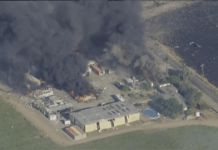Distress, deaths and destruction – Pakistan is bracing one of its worst calamities of its history at the moment. All provinces, estimated 30 million people, are directly affected with the floods while arguably the whole country is indirectly affected.
Against average rainfall of 125 millimeters annually, the ongoing season has received at least three times more rains so far.
“People need to be happy that they are at least getting vegetables and fruits albeit at high prices,” said vegetable seller Mohammad Qasim at a well-off neighborhood of PECHS Block 2 in Karachi. “I am expecting shortages in the next few days.”
Sindh, which accounts for Pakistan’s 30 percent of agricultural output and Balochistan with 8 percent output have been the worst hit. Reports suggest that the situation is more critical than the disastrous 2010-11 flash floods. Lower Punjab and Khyber-Pakhtunkhwa have also been affected.
Damaging the lives of people, the floods have also severely affected animals, crops, infrastructure and industries in many parts of the country.
A JS Research’s initial estimates suggest that the country may see losses of $4 billion due to the floods. Some others estimate the damages to cost the nation around $10 billion.
The damages to local raw material supply such as rice and cotton may see a fall in exports while lower local produce may push imports higher than estimated during fiscal year 2023, which would further put pressure on foreign exchange reserves due to increased trade deficit.
However, remittances may increase as overseas Pakistanis are expected to increase the amount they send back home while they may also increase sending donations.
Livestock and textile-related goods that cumulatively hold around 30 percent weight in the CPI – consumer price index that tracks inflation.
“This is a high risk to the already sticky food inflation (at 28%; 13-year high) and high WPI (at 38.6%; all-time high),” JS Research report says.
Apart from the agricultural sector that has directly affected, the manufacturing sector is also expecting tough times ahead.
For instance, demand for tractors is primarily dependent on the performance of the agriculture sector. Farmer income has a direct positive impact on demand for tractors. During fiscal year 2022, increased crop production improved tractor sales by 16 percent.
Damaged cotton crops in Sindh, which are 30% of total production, are expected to dent demand for tractors in the next one year. Meanwhile, Toyota’s sales may also decline as 50 percent of its sales come from rural areas. Honda bikes may also see a decline in sales as it sells a major chunk of its production to people of rural areas.
All other sectors such as construction (cement, steel, etc.), fertilizer and oil marketing companies are also bracing for tough times ahead.
Companies are fearing that the government may impose a flood surcharge this year as it did in the aftermath of 2010-11 floods to fund subsidies and repair infrastructure after the floods.
However, this is a national calamity and everyone has to make their contribution. There’s certainly a damage to the feasibility of investing and doing in Pakistan for foreigners for any such taxes to be imposed, but the damage floods have done, the government may not have much options to choose from.




































